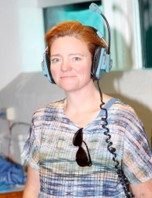 |
|
Astrophysical and Planetary Sciences Colloquium
Monday, September 11, 2023 at 12:15-1:15 pm JILA auditorium Dr. Amy R. Winebarger, NASA "Probing the Sun with Imaging Spectrographs"  Abstract:EUV and X-ray images of the Sun have revolutionized our understanding of our closest star. With them, we can probe the morphology and temperature structure of the solar atmosphere and see how they evolve as a function of space and time. However, image data cannot be used to determine line-of-sight velocities, abundances, or densities. This information is required to calculate the energy budget of eruptive events, provide boundary conditions for global solar models, and explore fundamental processes occurring in the solar atmosphere. For those diagnostics, we require spectroscopy. Because the structures on the Sun are extended sources, most modern-day spectrometers observe the Sun through long narrow slits. Two-dimensional, spectrally pure solar images with velocity, abundance, and density information are built up by stepping the slit over regions of interest. This method implies that two-dimensional information is highly limited by cadence and the temporal evolution and spatial structure of these parameters can never be truly separated. Both spatial and spectral information can be obtained in a single snapshot with slitless spectrometers, which were often used in the 1950-1970s, but were abandoned due to the difficulty of unfolding the overlapping spatial and spectral information. Thanks to advances in computer processing speeds and machine learning algorithms, there have been several techniques developed to complete the spatial/spectral unfolding, unlocking the full capability of slitless spectrometers for solar observations. The goal of this talk is to give an overview of the capability of such instruments, including recent resuts from a sounding rocket flight, and demonstrate their usefulness in the next decade of solar observatories and beyond.
|